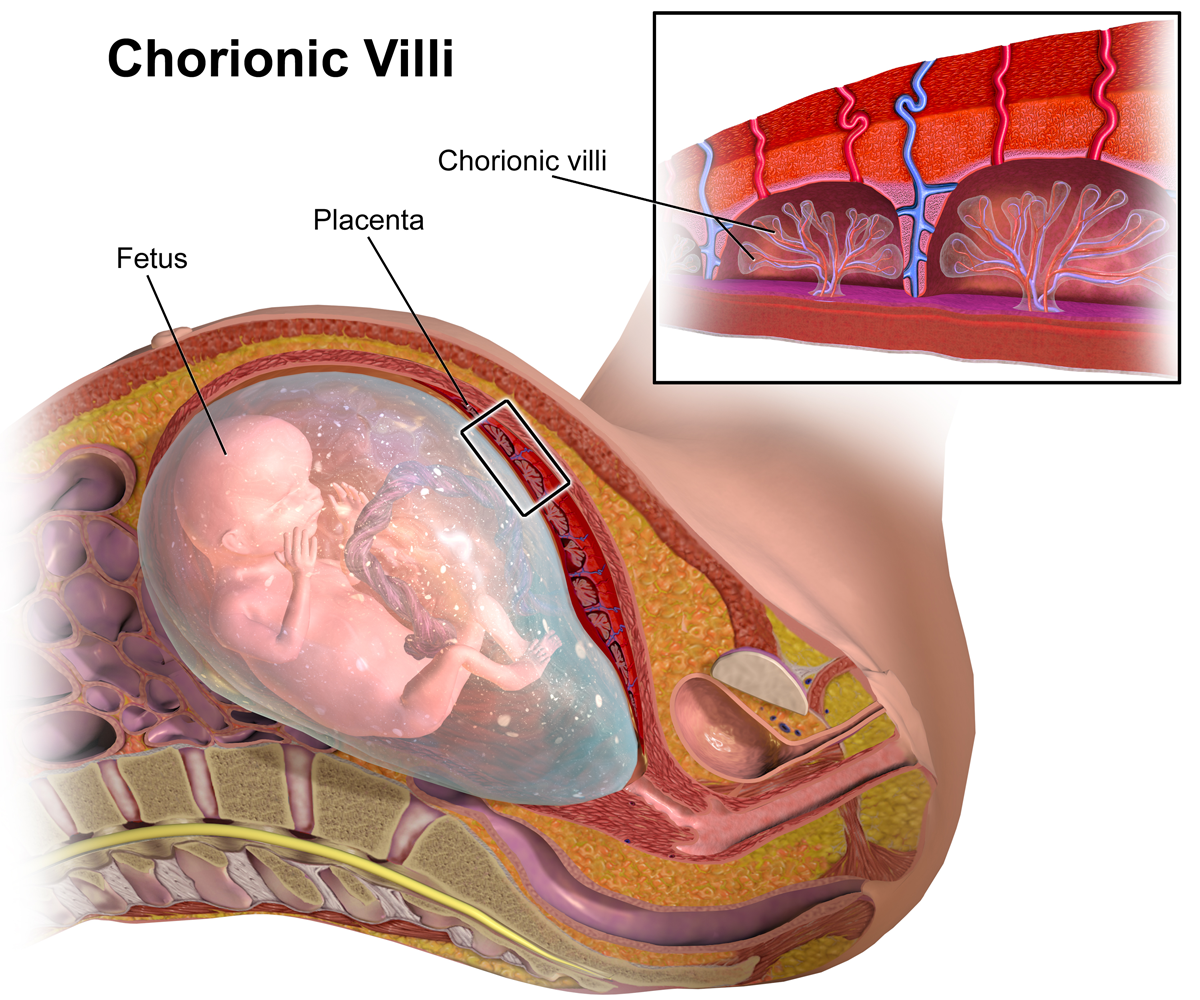
Chorionic villi analysis to detect genetic abnormalities

Chorionic villi are part of the placenta. This tissue is found in an area of the placenta that is in contact with maternal blood, which makes it essential during pregnancy. If we want to perform genetic studies on the baby, we can take a sample of chorionic villi. A pregnant woman may be asked to undergo this procedure for several reasons:
- If it is a case of advanced maternal age.
- If either of the parents is a carrier of a genetic abnormality, they can pass it on to the baby.
- If a genetic condition runs in the family of any of the parents.
- If the parents have previously had a child with a genetic abnormality.
- If any of the tests performed during the pregnancy (ultrasound, nuchal translucency test, blood tests) suggest a high risk of presenting a genetic abnormality.
The test
This test is performed between weeks 13 and 15 of pregnancy and consists of taking a small tissue sample from the placenta, which contains the same genes as the baby. Firstly, the mother gets an ultrasound to check the baby's position (and the position of the placenta), and then the sample is taken. Clinicians can take the sample in two different ways, depending on where the placenta is placed. It is most commonly performed through the abdomen.
1. Through the abdomen
The placental tissue sample is taken by inserting a needle into the abdominal skin through the uterus wall. The visualisation of the needle position is monitored by ultrasound. After the biopsy, the sample is sent to the laboratory for examination.
2. Through the cervix
The cervix is opened using a pair of thin forceps. The sensation is similar to that of a vaginal smear. With the help of an ultrasound, the forceps are directed towards the placenta to take the sample.
Is it painful?
Most women find the test uncomfortable but not painful. It only lasts a few minutes. Women who undergo the test through the abdomen feel tightness and discomfort in the uterus. Those who have the test done through the cervix compare the sensation with that of taking a vaginal smear.

Risks of taking the test
Approximately 1-2 women in 100 (1-2%) experience a miscarriage after taking the test. The statistic may vary slightly depending on the data source, with no known cause. However, 98-99% of pregnancies go on with no complications.
Type of genetic diseases that can be detected
Usually, the results refer to the genetic abnormality or abnormalities we are actually looking for. Occasionally, it can reveal other alterations. There is no global analysis to check for all genetic abnormalities.
How long does it take to know the results?
In some cases, it takes three days to get the results of a chorionic villi analysis, but in others, it may take 2-3 weeks. When results do not come straight away, it does not necessarily mean there is a problem; sometimes, cells grow slowlier. We suggest asking your doctor through which channel (in person, mail, telephone) you will receive the results.
